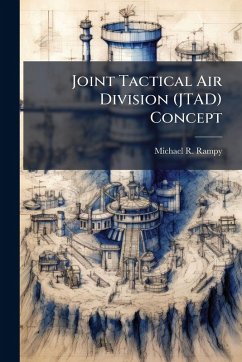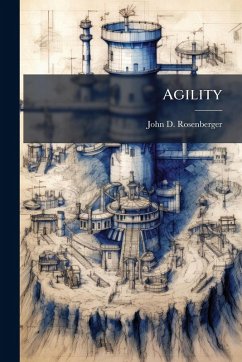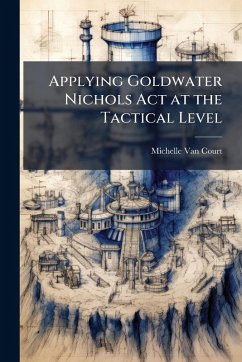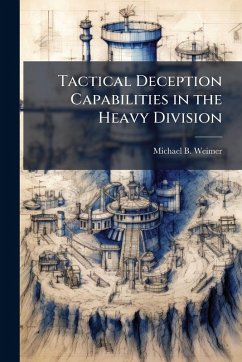
Sense of Locality and Tactical Agility
Versandkostenfrei!
Versandfertig in über 4 Wochen
15,99 €
inkl. MwSt.
Weitere Ausgaben:

PAYBACK Punkte
8 °P sammeln!
This monograph examines the importance of a commander's ability to sense the terrain. The discussion relates this ability to the commander's ability to act faster than the enemy. This agility is critical to tactical success. As agility is one of the four tenets of the U. S. Army's fighting doctrine it is important that the Army determine means to improve tactical agility. Developing a sense of locality is one way to promote tactical agility. This monograph examines the relationship between these two concepts and shows that a sense of locality is essential for tactical agility. The discussion b...
This monograph examines the importance of a commander's ability to sense the terrain. The discussion relates this ability to the commander's ability to act faster than the enemy. This agility is critical to tactical success. As agility is one of the four tenets of the U. S. Army's fighting doctrine it is important that the Army determine means to improve tactical agility. Developing a sense of locality is one way to promote tactical agility. This monograph examines the relationship between these two concepts and shows that a sense of locality is essential for tactical agility. The discussion begins with consideration of the theoretical and doctrinal aspects of terrain, a sense of locality, tactics, and agility. It includes an examination of the elements of a sense of locality, a definition of tactical agility, and an analysis of the relationship between a sense of locality and tactical agility. To illustrate this relationship two historical battles are briefly described and examined. The first illustration is of Major General Thomas J. (Stonewall) Jackson at the Battle of Winchester during his Shenandoah Valley Campaign in the Spring of 1862. The second is of Major General Norman D. Cota at the Battle of Schmidt in November, 1944. The discussion draws conclusions as to the commanders'; exhibited senses of locality and tactical agility. Additionally, the discussion and illustrations provide valuable lessons on means or developing a sense or locality and promoting tactical agility. Finally, the discussion presents suggestions for today's commander on how to apply the noted lessons. The lessons reinforce the need for a thorough study of available information on the terrain and force capabilities, for personal reconnaissance, and for reflection prior to battle on use of the terrain during battle. Additionally, suggestions for training are presented; and the study suggests that commanders view the terrain in terms of its offensive and defensive potential--as a weapon av This work has been selected by scholars as being culturally important, and is part of the knowledge base of civilization as we know it. This work was reproduced from the original artifact, and remains as true to the original work as possible. Therefore, you will see the original copyright references, library stamps (as most of these works have been housed in our most important libraries around the world), and other notations in the work. This work is in the public domain in the United States of America, and possibly other nations. Within the United States, you may freely copy and distribute this work, as no entity (individual or corporate) has a copyright on the body of the work. As a reproduction of a historical artifact, this work may contain missing or blurred pages, poor pictures, errant marks, etc. Scholars believe, and we concur, that this work is important enough to be preserved, reproduced, and made generally available to the public. We appreciate your support of the preservation process, and thank you for being an important part of keeping this knowledge alive and relevant.












